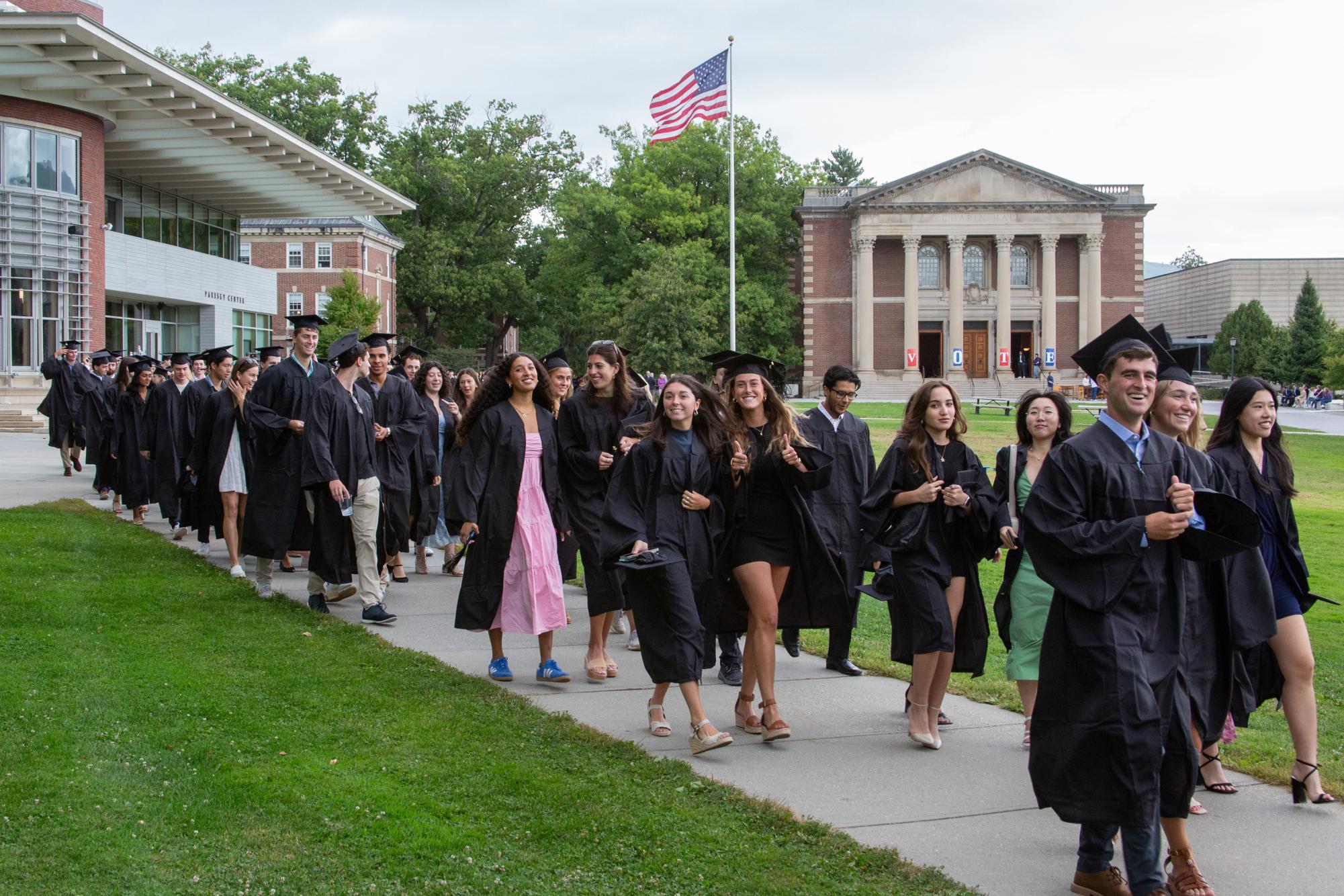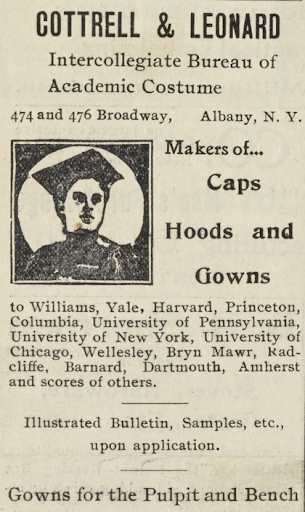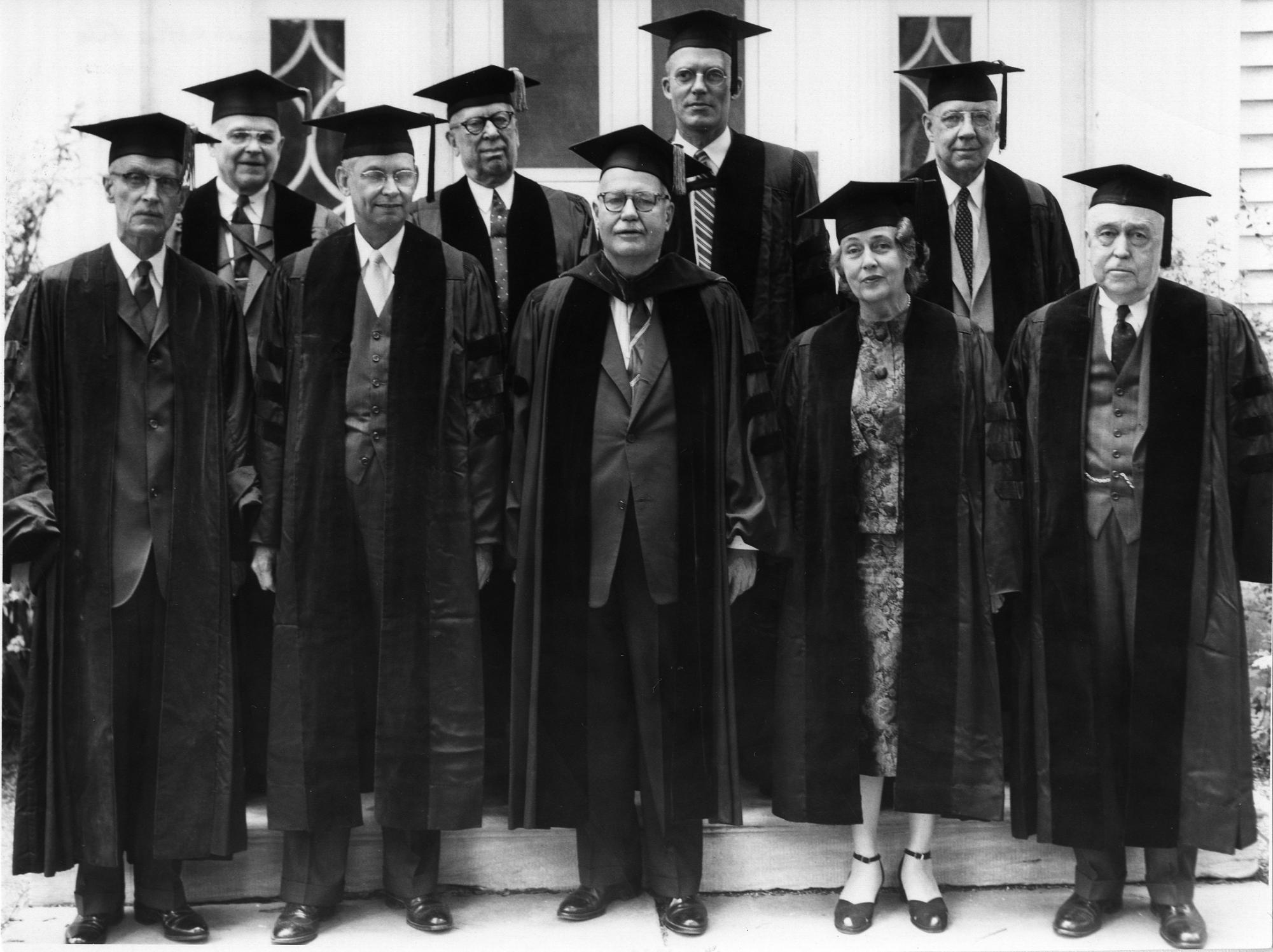
As seniors paraded around Paresky Lawn during Convocation on Sept. 7, they wore their caps and gowns for the first time — a commencement dress rehearsal of sorts and a glimpse into their future. But the cap and gown tradition is also deeply tied to the College’s past. In fact, Williams may have been the first American institution to adopt the regalia as tradition at its commencement in 1887.
While academic costume dates back to the earliest European institutions — Oxford and Cambridge — there is heated debate about which institution can lay claim to originating the graduation tradition in the United States. Those at several colleges and universities, including Columbia, UPenn, and Princeton, wore versions of caps and gowns in 1887 and earlier — but they were worn either as a daily uniform or only among faculty, rather than as an annual graduation tradition.

However, Williams’ website makes a definitive statement: “The first students in America to wear caps and gowns at graduation were Williams Class of 1887.” And Gardner C. Leonard, Class of 1887, might be the key to substantiating that claim.
A 1902 article in The Albany Argus tells Leonard’s story. In 1887, Leonard served on a committee arranging graduation proceedings at the College, where “classes had intermittently graduated in caps and gowns.” He saw, however, that the gowns were of “a pattern so shapeless … they must be incorrect,” and thus he began designing his own — importing a gown from England “quite different in cut and technical construction” and altering it, “embodying some American ideas as to fit and utility.” Once complete, he placed an order for the Class of 1887 with Cottrell & Leonard, his family’s dry goods and furs business based in Albany, N.Y.
Cottrell & Leonard advertised in the May 2, 1904, issue of the Record.
Caps and gowns touted two main benefits: They recalled English academic traditions and blurred class boundaries.
“The value to the colleges of the gown [is] as an academic uniform which on its historic and picturesque side served to remind the wearers of the continuity and dignity of learning and recalled the honored roll of English speaking university men and on its democratic and utilitarian side subdued the differences in dress arising from different tastes, fashions, and degrees of wealth,” the Argus stated.
According to the paper, the College hired Leonard again in 1891 to design more gowns, which spurred interest from several other institutions “in the improvement of commencement ceremonies by the use of the cap and gown.” Two years later, Leonard advised a new organization, the Intercollegiate Commission on Academic Costume, which convened for the first time at Columbia.
One of Leonard’s ideas was to outline rules for a “code of signals,” making sense of the order of procession and the official college colors, with Williams, of course, bearing “Royal Purple.” This was key to the formation of the Commission’s Code released in May 1895 — guidelines that largely remain in place today.

“The colors please the eye and add immensely to the beauty and impressiveness of ceremonial processions and the arrangement of colorings excite the interest of all spectators who strive to figure out the significance of the symbolic display,” the Argus explained.
Leonard’s influence was widespread: His catalog of designs circulated among many institutions. The first orders came from Union, Yale, and Harvard, and later Wellesley, Columbia, Princeton, and Bryn Mawr, at which point he began to face competition from other manufacturers with similar styles.
The Williams Class of 1887, however, was the first to wear Leonard’s designs, which still adorn senior classes around the country today at graduation ceremonies.








